Weird sea creatures include anglerfish, large-mouthed fish that catch prey using glowing lures; hagfish, snake-like fish that deter predators by producing thick slime; blue-ringed octopuses, among the most venomous of all sea animals; the peacock mantis shrimp, a crustacean with a bullet-like punch; and the immortal jellyfish, a jellyfish that can live forever.
On this page, you’ll meet these and many more strange sea creatures from the world’s oceans.
Have you seen any of these species? What's your favorite? Are there any weird sea creatures we’ve missed out? Let us know in the comments section at the bottom of the page!
Weird Sea Creatures List
- Anglerfish
- Armored Snail
- Beluga Whale
- Blue-Ringed Octopus
- Clown Frogfish
- Faceless Cusk
- Fin Whale
- Flamingo Tongue Snail
- Ghost Shark
- Giant Squid
- Hagfish
- Hairy Frogfish
- Humboldt Squid
- Immortal Jellyfish
- Nautilus
- Nudibranch
- Peacock Mantis Shrimp
- Pelican Eel
- Pink Sea Through Fantasia
- Portuguese Man-O-War
- Red Handfish
- Reef Stonefish
- Riftia Pachyptila
- Sarcastic Fringehead
- Sea Angel
- Sea Cucumber
- Sea Pen
- Vampire Squid
- Whale Shark
You can see more weird species on the following pages:
Weird Animals Pictures & Facts
Weird Amphibians Pictures & Facts
Weird Birds Pictures & Facts
Weird Fish Pictures & Facts
Weird Insects Pictures & Facts
Weird Mammals Pictures & Facts
Weird Reptiles Pictures & Facts
Weird Plants Pictures & Facts
Ugly Animals Pictures & Facts
Discover More About Animals
Discover More Sea Animals
Ocean Animals Pictures & Facts
Anglerfish
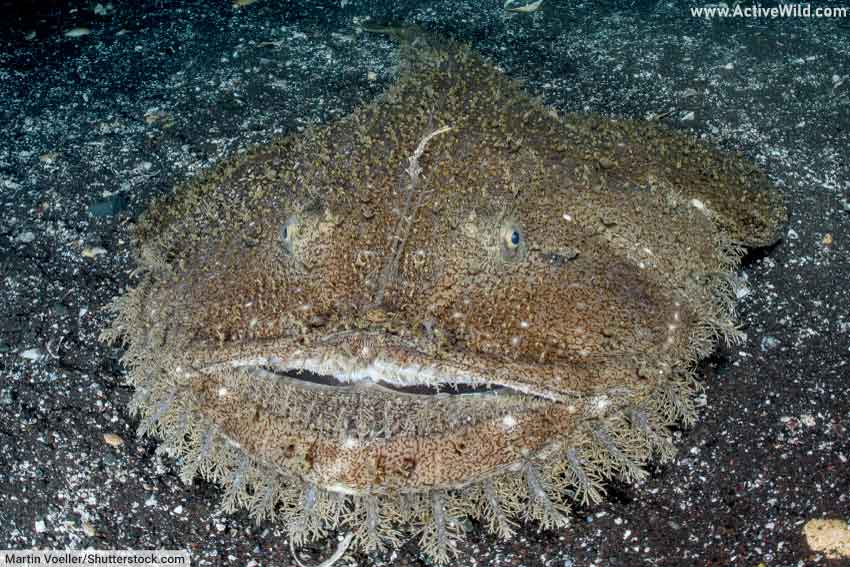
Scientific name: Lophiiformes (order)
Family: Various families
Conservation Status: Varies by species
Anglerfish are a diverse group of deep-sea fish known for their unique hunting method, which involves a bioluminescent lure that hangs from a specialized appendage on their heads. This lure attracts prey in the dark depths of the ocean, allowing the anglerfish to ambush its target.
Some anglerfish species exhibit extreme sexual dimorphism, with females being much larger and possessing the characteristic lures, while males are small and lack lures. Males often attach themselves to females for life, relying on their mate for nutrients in exchange for fertilizing her eggs.
359 species of anglerfish are currently recognized. (source) You can find out about some of these in more detail further down this page.
Discover More with Active Wild
You can find out more about fish on this page: Fish – The Ultimate Guide
Discover different types of fish on this page: Types of Fish
Armored Snail
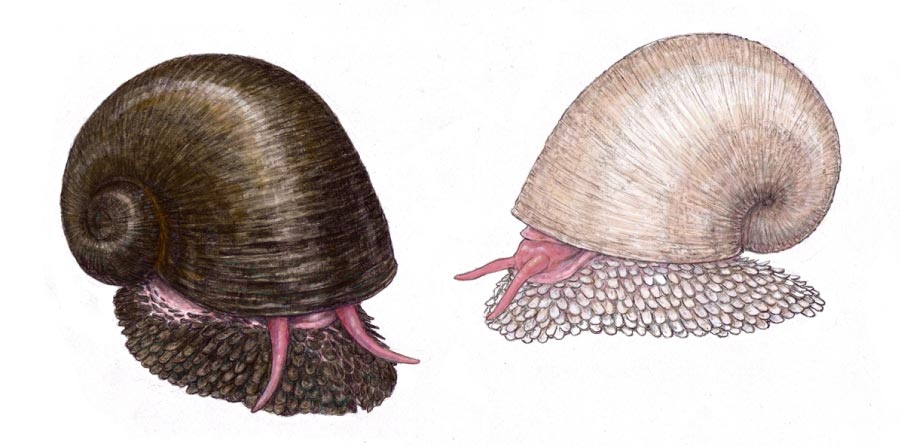
Scientific name: Chrysomallon squamiferum
Family: Peltospiridae
Conservation Status: Endangered
The armored snail, or scaly-foot gastropod, is a unique deep-sea snail found near hydrothermal vents in the Indian ocean.
This bizarre sea creature has a distinctive, iron-coated shell and scales on its foot, providing protection from predators and the harsh environment. These adaptations are believed to be the result of the snail's symbiotic relationship with bacteria, which metabolize chemicals from the hydrothermal vents to provide nutrients for the snail.
This is a form of chemosynthesis, a process in which chemicals are converted into food. (Compare this to photosynthesis – the process by which plants convert light into food.)
The armored snail is currently listed as "endangered," as its limited range and the potential impact of deep-sea mining activities make it vulnerable to extinction.
Discover More with Active Wild
Discover different types of mollusks on this page: Mollusks Examples
You can see more endangered animals on this page: Endangered Animals
Beluga Whale

Scientific name: Delphinapterus leucas
Family: Monodontidae
Conservation Status: Least Concern
The beluga whale is an Arctic cetacean known for its white coloration, bulbous forehead, and highly flexible neck. It is a highly social animal, living in groups called pods, and communicating using a wide range of vocalizations, earning it the nickname the "canary of the sea."
The beluga whale feeds primarily on fish, crustaceans such as shrimp and crabs, various mollusks and other invertebrates, using echolocation to locate its prey.
This distinctive whale is closely-related to another weird sea creature, the narwhal, which is known for its unicorn-like tusk. Both species are found in the Arctic Ocean and sub-Arctic waters.
Discover More with Active Wild
You can find out more about the beluga whale on this page: Beluga Whale Facts
You can see a list of the largest whales on this page: World's Largest Whale Species
Blue-Ringed Octopus
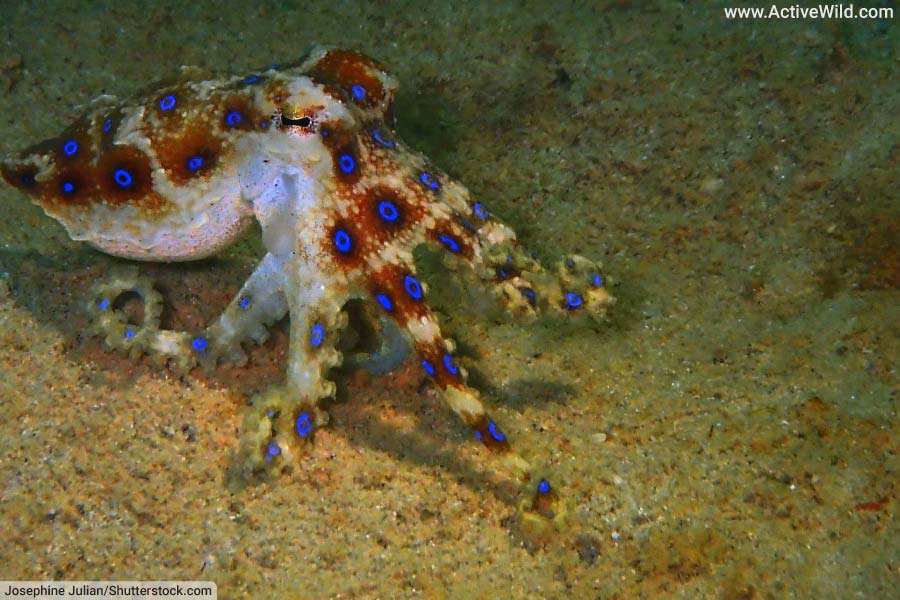
Scientific name: Hapalochlaena (genus)
Family: Octopodidae
Blue-ringed octopuses are a genus (Hapalochlaena) of small, venomous octopuses found in the coastal waters of the Pacific and Indian oceans.
The four species that make up this group are known for their striking, iridescent blue rings, which become more vivid when the octopus feels threatened.
Blue-ringed octopuses are highly venomous, using a powerful neurotoxin called tetrodotoxin to paralyze their prey and deter predators. Although their bite is rarely fatal to humans, it can cause severe symptoms, including respiratory failure.
Discover More with Active Wild
Discover different types of mollusks on this page: Mollusks Examples
Clown Frogfish
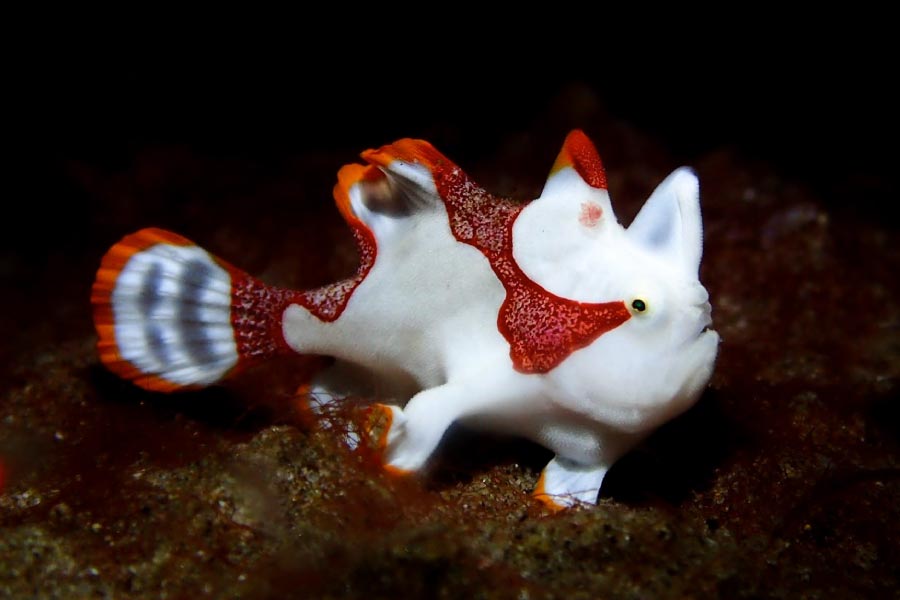
Scientific name: Antennarius maculatus
Family: Antennariidae
Conservation Status: Least Concern
The clown frogfish, also known as the warty frogfish or clown anglerfish, is a species of anglerfish found in the tropical waters of the Indo-Pacific region. It is characterized by its colorful, mottled pattern, which helps it blend in with its surroundings, and its large, upturned mouth, giving it a frog-like appearance.
Like other frogfish, the clown frogfish is an ambush predator, using a modified dorsal spine as a lure to attract unsuspecting prey. Its ability to change color and texture allows it to camouflage itself among coral reefs, sponges, and other marine environments.
The clown frogfish primarily feeds on small fish and crustaceans.
Discover More with Active Wild
You can find out more about fish on this page: Fish – The Ultimate Guide
Discover different types of fish on this page: Types of Fish
Faceless Cusk
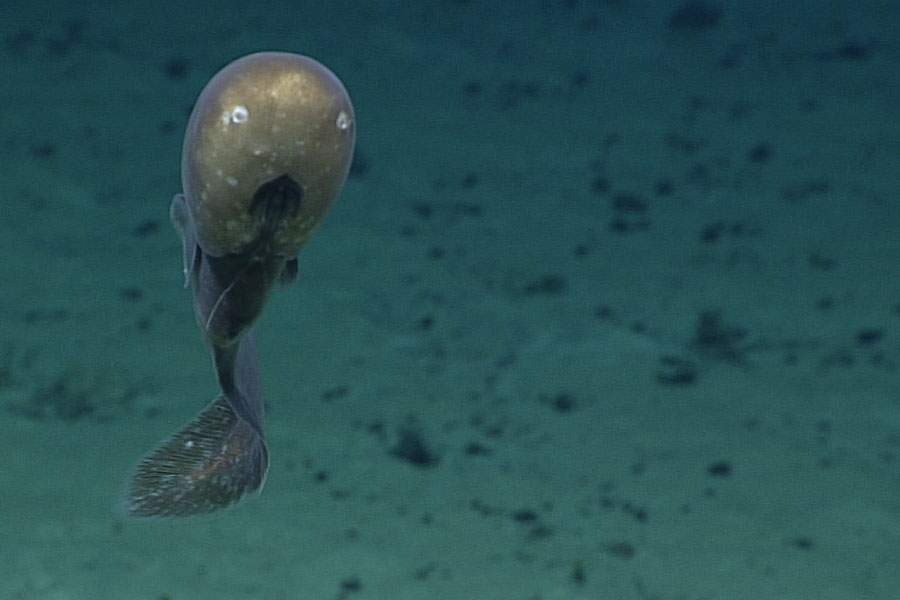
Scientific name: Typhlonus nasus
Family: Aphyonidae
Conservation Status: Least Concern
The faceless cusk is a deep-sea fish found in the Pacific, Atlantic, and Indian Oceans. Its name comes from the lack of facial features, with reduced eyes and an unusual mouth located under its head.
This elusive deep ocean fish lives at depths of over 13,000 feet / 3,962.4 meters and has a long, eel-like body with a gelatinous texture. Very little is known about the faceless cusk's biology, including its reproductive habits and diet.
Discover More with Active Wild
You can find out more about fish on this page: Fish – The Ultimate Guide
Discover different types of fish on this page: Types of Fish
Fin Whale
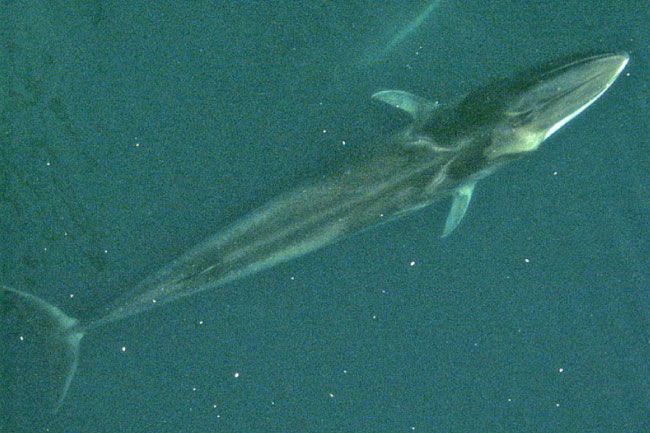
Scientific name: Balaenoptera physalus
Family: Balaenopteridae
Conservation Status: Vulnerable
The fin whale is the second-largest whale species, reaching lengths of up to 85 feet. (The largest whale is the blue whale.) It is characterized by its streamlined body, a dorsal fin located two-thirds down its back, and weird asymmetrical coloration, with a white right lower jaw and a dark left lower jaw.
Fin whales are found in oceans worldwide, feeding on krill, small fish, and other invertebrates. They are fast swimmers, capable of reaching speeds of up to 23 miles per hour.
The fin whale is classified as "Vulnerable" due to historical whaling practices that significantly reduced its population. Current threats include ship strikes, entanglement in fishing gear, and the impacts of climate change on its prey.
Discover More with Active Wild
Discover more about this species: Fin Whale Facts
You can see a list of the largest whales on this page: World's Largest Whale Species
Flamingo Tongue Snail
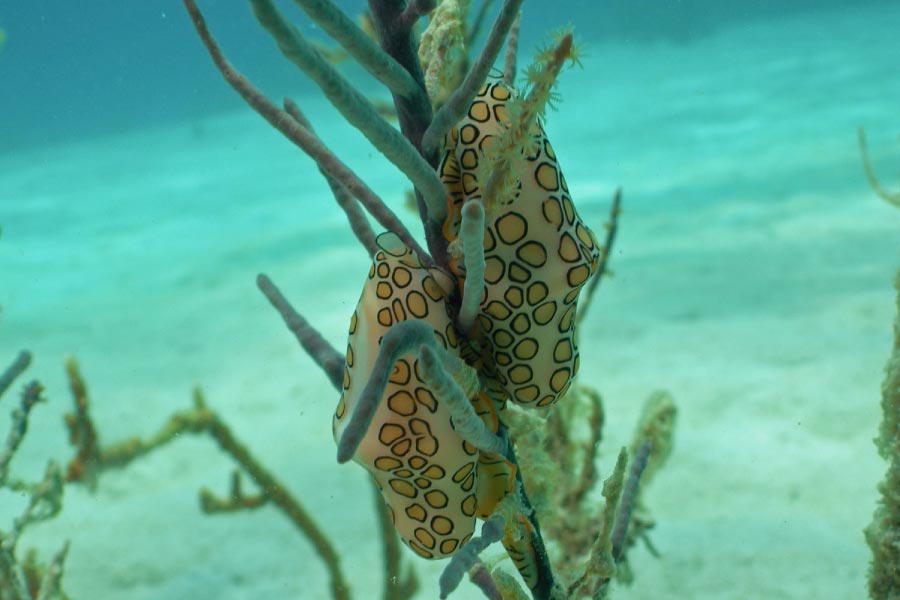
Scientific name: Cyphoma gibbosum
Family: Ovulidae
Conservation Status: Not Evaluated
The flamingo tongue snail is a small, brightly colored marine snail found in the tropical waters of the Western Atlantic and Caribbean. It is known for its vibrant orange and yellow coloration with black markings. This coloration is caused by the animal’s soft mantle, which covers the shell when it is alive, and not the shell itself.
The flamingo tongue snail feeds on soft corals, particularly gorgonians, absorbing the coral's pigments and incorporating them into its own tissue.
Discover More with Active Wild
Discover different types of mollusks on this page: Mollusks Examples
Ghost Shark
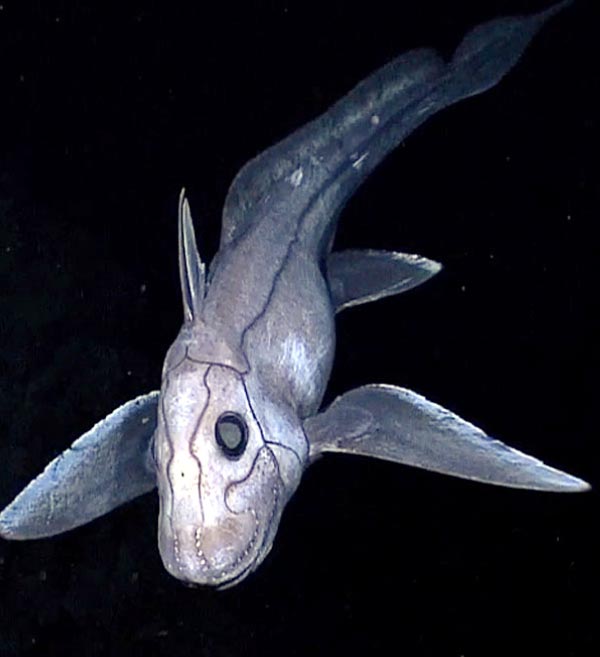
Scientific name: Chimaeriformes (order)
Family: Various families
Conservation Status: Varies by species
Ghost sharks, also known as chimaeras or ratfish, are a group of cartilaginous fish found in deep-sea habitats worldwide.
Related to sharks and rays, ghost sharks have a unique appearance, with large, wing-like pectoral fins, a long, tapering tail, and a single, continuous dorsal fin.
Ghost sharks have large eyes for seeing in low light conditions, and, like other sharks, their snouts are covered with sensory organs called ampullae of Lorenzini, which help them detect the electrical fields produced by their prey.
Discover More with Active Wild
Find out more about sharks on this page: Shark Facts
Discover different types of sharks on this page: Types of Sharks
Giant Squid
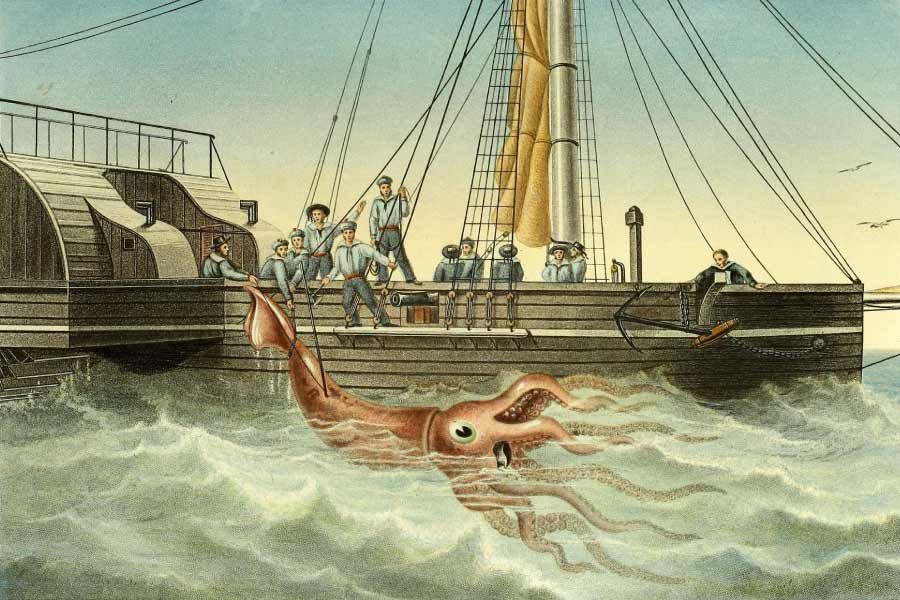
Scientific name: Architeuthis dux
Family: Architeuthidae
Conservation Status: Least Concern
The giant squid is a deep-sea cephalopod known for its massive size, reaching lengths of up to 43 feet. It has a long mantle, eight arms, and two longer tentacles, all lined with suckers for capturing prey.
The giant squid's eyes are the largest in the animal kingdom, measuring up to 10 inches in diameter; an adaptation for detecting prey in the dark depths of the ocean. The species primarily feeds on deep-sea fish and other cephalopods.
Due to its elusive nature and deep-sea habitat, the giant squid remains one of the most mysterious creatures in the ocean.
Discover More with Active Wild
Discover different types of mollusks on this page: Mollusks Examples
Hagfish
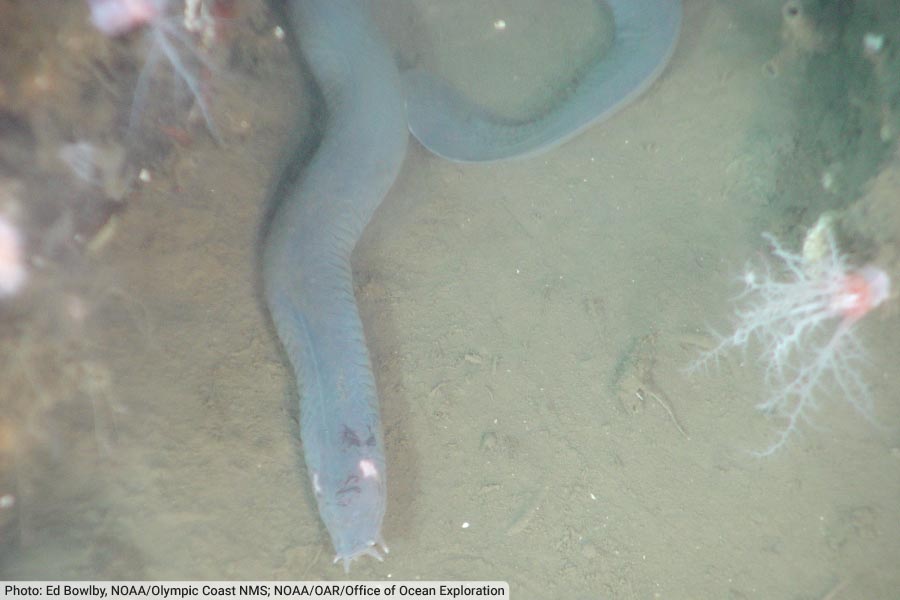
Scientific name: Myxinidae (family)
Family: Myxinidae
Conservation Status: Varies by species
Hagfish are a group of primitive, jawless fish known for their unique defense mechanism, which involves the release of copious amounts of slime when threatened. This slime can clog the gills of potential predators, allowing the hagfish to escape.
Hagfish have a snake-like body, a tooth-like structure called a keratinous plate, and multiple pairs of tentacles surrounding their mouths. They are scavengers, feeding on dead and decaying animals on the ocean floor.
Hagfish are found in oceans worldwide, primarily at depths of several hundred to several thousand feet.
Discover More with Active Wild
You can find out more about fish on this page: Fish – The Ultimate Guide
Discover different types of fish on this page: Types of Fish
Hairy Frogfish
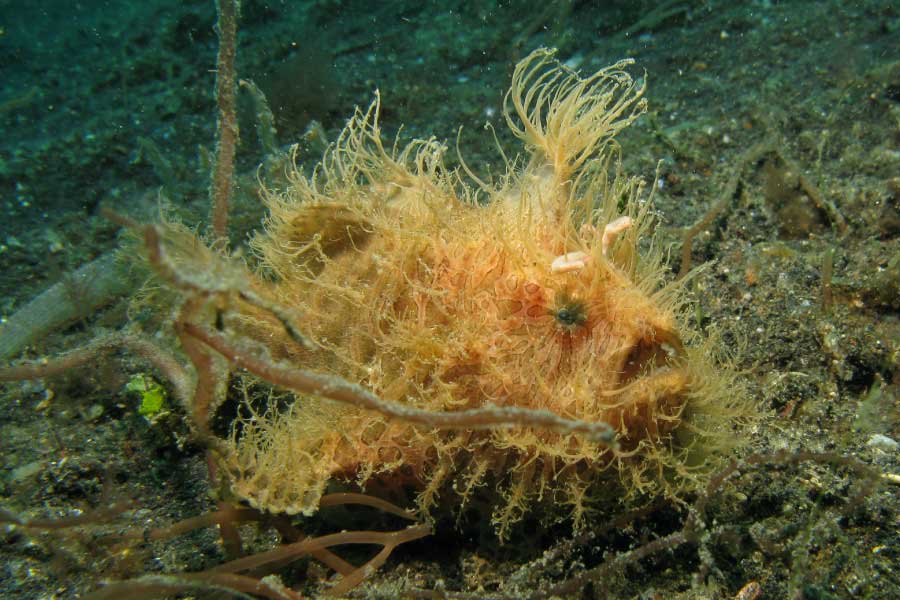
Scientific name: Antennarius striatus
Family: Antennariidae
Conservation Status: Least Concern
The hairy frogfish, also known as the striated frogfish, is a species of anglerfish found in shallow waters of the Indo-Pacific region. It is named for its unique appearance, with numerous hair-like skin filaments covering its body, which provide excellent camouflage among algae and coral.
Like other frogfish, the hairy frogfish is an ambush predator, using a modified dorsal spine as a lure to attract prey. Unusually, it also attracts prey by emitting chemicals. It has a large, upward-facing mouth and can swallow prey nearly its own size. This weird-looking fish is a known cannibal, occasionally eating members of its own species.
Discover More with Active Wild
You can find out more about fish on this page: Fish – The Ultimate Guide
Discover different types of fish on this page: Types of Fish
Humboldt Squid
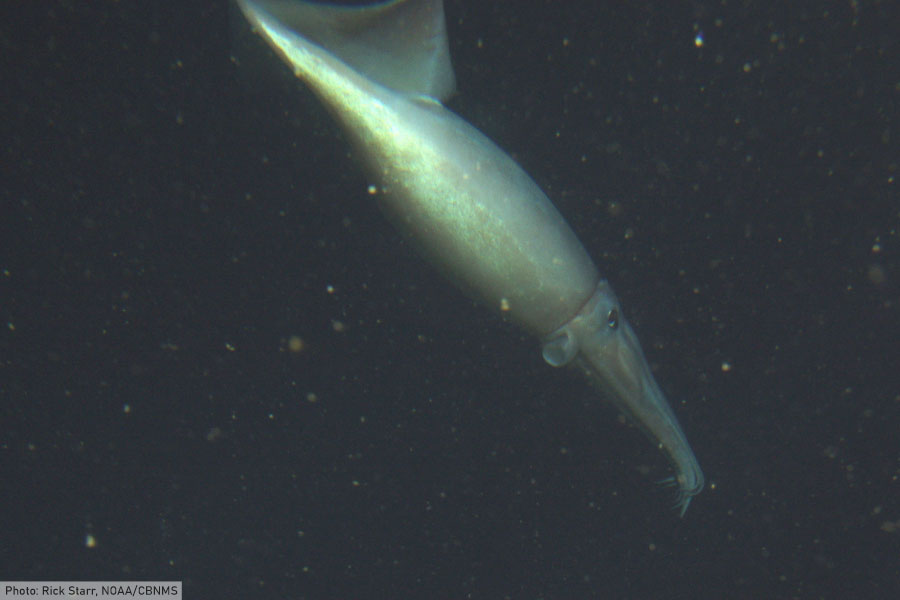
Scientific name: Dosidicus gigas
Family: Ommastrephidae
Conservation Status: Least Concern
The Humboldt squid, also known as the jumbo squid, is a large, aggressive squid found in the Eastern Pacific Ocean, from California to Chile. It can reach lengths of up to 6 feet and is known for its voracious appetite and pack-hunting behavior.
This cephalopod primarily feeds on small fish and crustaceans, using its powerful beak and rows of sharp-toothed suckers to capture and tear apart its prey.
Like other squid, the Humboldt squid has the ability to rapidly change its color, which it uses for communication and camouflage.
The Humboldt squid has a short lifespan of only 1-2 years, but it reproduces quickly, with females laying thousands of eggs.
Discover More with Active Wild
Discover different types of mollusks on this page: Mollusks Examples
Immortal Jellyfish
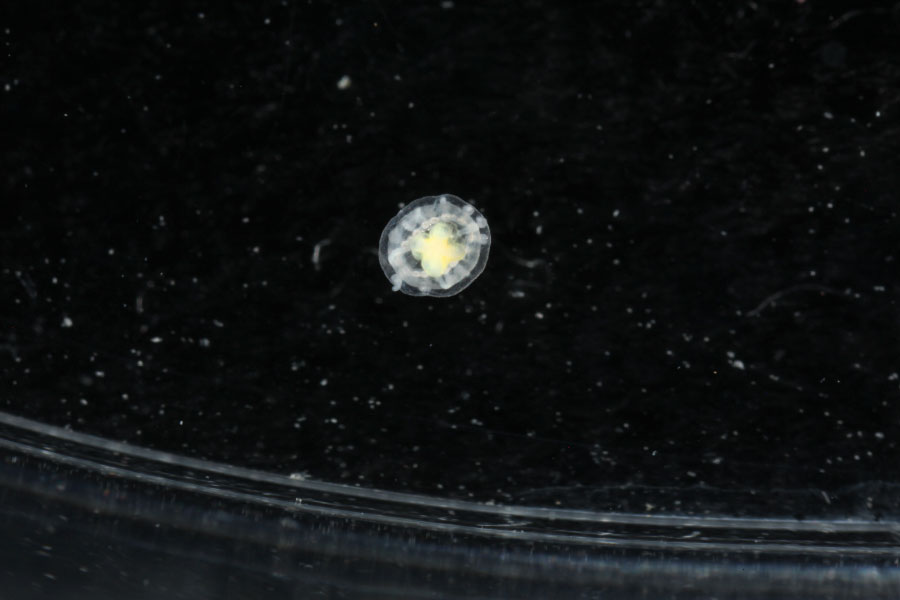
Scientific name: Turritopsis dohrnii
Family: Oceaniidae
Conservation Status: Not Evaluated
The immortal jellyfish, Turritopsis dohrnii, is a small jellyfish found in the Mediterranean Sea and the waters around Japan.
This weird sea creature is biologically immortal – able to revert to its juvenile form, called a polyp, after reaching maturity. This process essentially allows the Immortal Jellyfish to start its life cycle over again, potentially living indefinitely under the right conditions.
The immortal jellyfish feeds on plankton, small fish, and other small organisms.
Discover More with Active Wild
You can find out more about the immortal jellyfish on this page: Immortal Jellyfish
Discover more invertebrates on this page: List Of Invertebrates
Nautilus
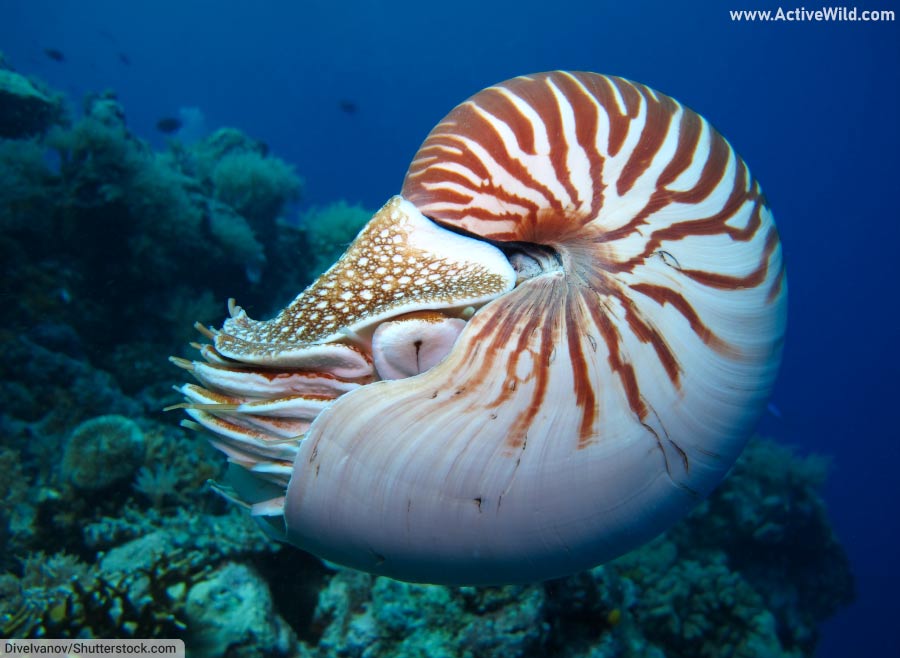
Scientific name: Nautilus spp.
Family: Nautilidae
Conservation Status: Varies by species
Nautiluses are marine cephalopods related to squids and octopuses. They have a spiral shell, divided into chambers, which they use to regulate their buoyancy by controlling the amount of gas and fluid within each chamber.
Nautiluses have many small, simple eyes and a ring of tentacles surrounding a beak-like mouth. They are found in the deep waters of the Indo-Pacific region, feeding on crustaceans and detritus.
Eight living species of nautilus are currently recognized (source), although this figure is disputed by some biologists. The best-known and most widespread nautilus is the chambered nautilus (Nautilus pompilius).
Discover More with Active Wild
Discover different types of mollusks on this page: Mollusks Examples
Nudibranch
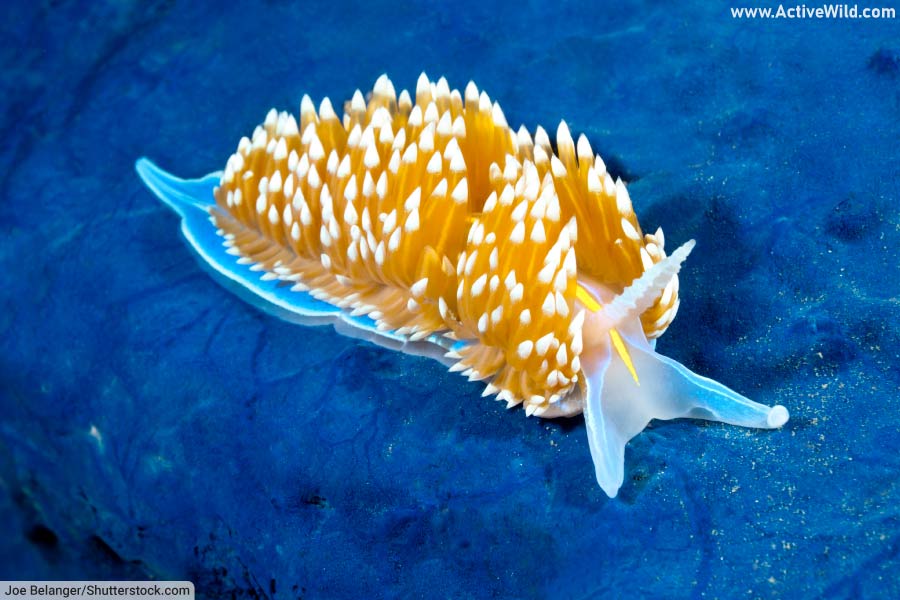
Scientific name: Nudibranchia (subclass)
Family: Various families
Nudibranchs are a diverse group of soft-bodied, marine gastropods known for their vibrant colors and intricate patterns. They are often called sea slugs, but are a distinct group within the larger sea slug category.
Nudibranchs lack an external shell, and their name means "naked gills," referring to the exposed gill-like structures on their backs. They are found in oceans worldwide, from shallow coral reefs to deep-sea habitats.
Nudibranchs feed on a variety of organisms, including algae, sponges, and other invertebrates.
Discover More with Active Wild
Discover different types of mollusks on this page: Mollusks Examples
Peacock Mantis Shrimp
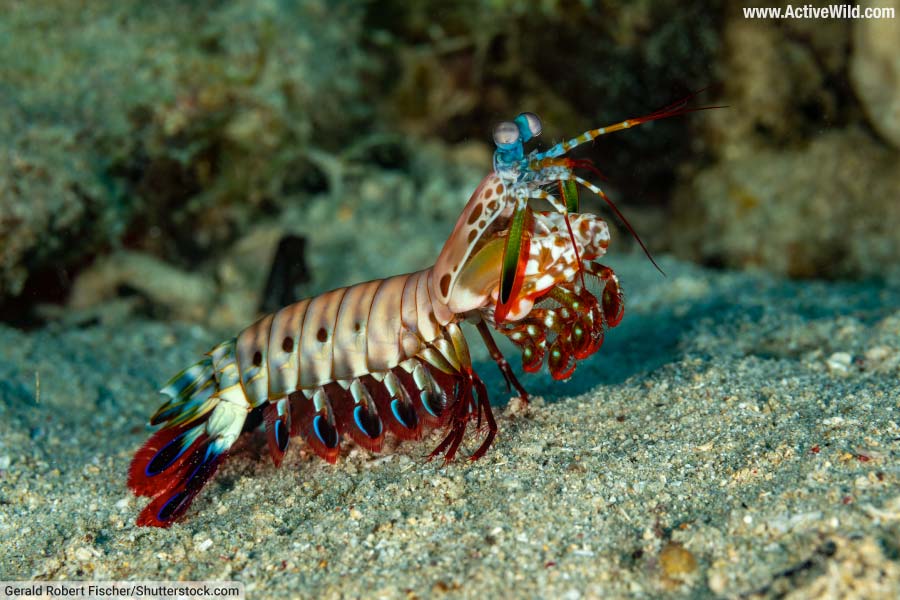
Scientific name: Odontodactylus scyllarus
Family: Odontodactylidae
Conservation Status: Not Evaluated
The peacock mantis shrimp is a colorful, aggressive crustacean found in the tropical waters of the Indo-Pacific region. It is known for its acute vision, with eyes that can see a wider range of colors than humans, and its powerful "smasher" appendages, used to attack prey and defend its territory. The peacock mantis shrimp can strike with a force equivalent to a .22 caliber bullet, stunning or killing its prey. It primarily feeds on other crustaceans, mollusks, and small fish.
Although unevaluated by the IUCN, species such as the mantis shrimp face threats from habitat loss, pollution, and the impacts of climate change on coral reef ecosystems.
Discover More with Active Wild
You can find out more about crustaceans on this page: Crustaceans – The Ultimate Guide
Pelican Eel
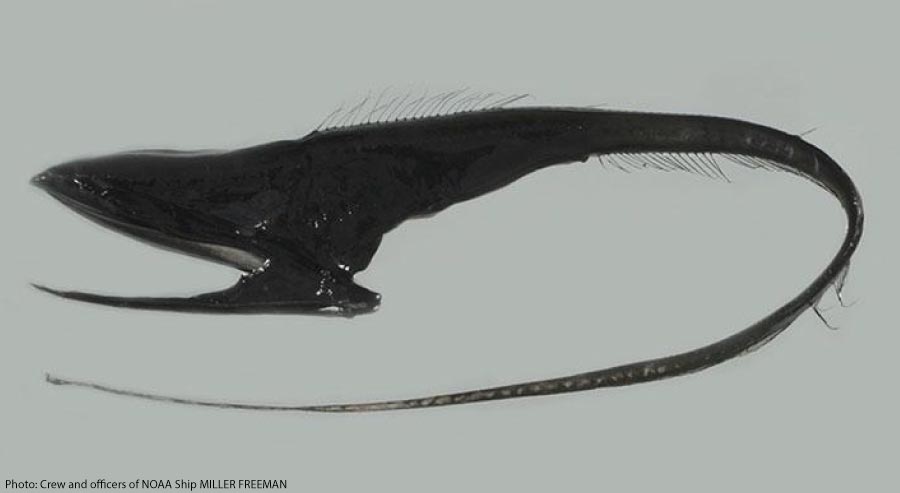
Scientific name: Eurypharynx pelecanoides
Family: Eurypharyngidae
Conservation Status: Least Concern
The pelican eel, also known as the gulper eel, is a deep-sea fish found in tropical and temperate waters worldwide. The species is characterized by its large, loosely hinged mouth, which it can expand to swallow prey much larger than itself.
The gulper eel has a long, slender body and a bioluminescent tail tip, which it likely uses as a lure to attract prey. It primarily feeds on deep-sea crustaceans and small fish.
Discover More with Active Wild
You can find out more about fish on this page: Fish – The Ultimate Guide
Discover different types of fish on this page: Types of Fish
Pink Sea Through Fantasia
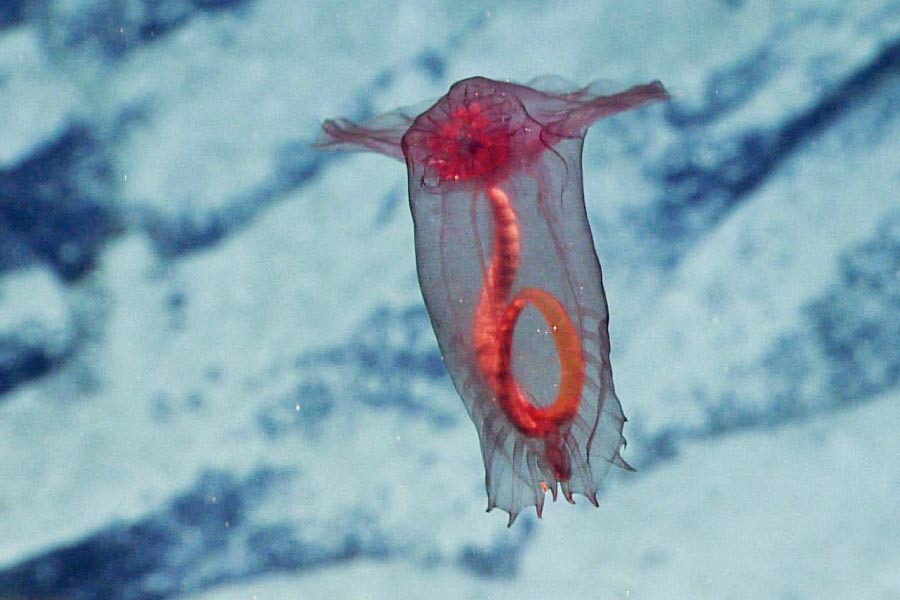
Scientific name: Enypniastes eximia
Family: Psychropotidae
Conservation Status: Not Evaluated
The pink sea through fantasia, also known as the "swimming sea cucumber" or the "headless chicken monster", is a deep-sea holothurian found in oceans worldwide.
One of the ocean’s weirdest invertebrates, the pink sea through fantasia has a transparent, gelatinous, pinkish-colored body, through which its internal organs can be seen.
The species has a unique method of locomotion, using a webbed, fin-like structure to propel itself through the water. It feeds on detritus and organic matter on the ocean floor.
Discover More with Active Wild
Discover more invertebrates on this page: List Of Invertebrates
Portuguese Man-O-War
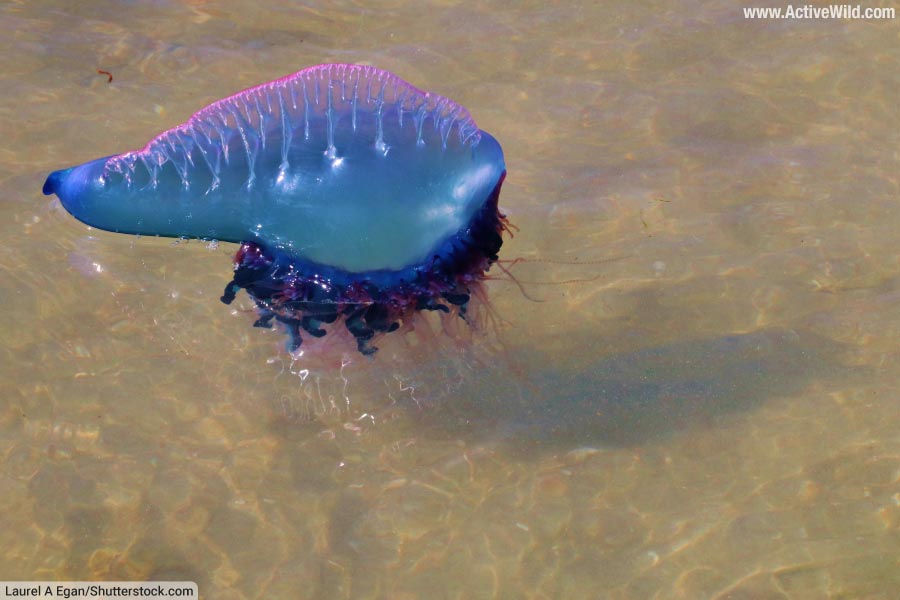
Scientific name: Physalia physalis
Family: Physaliidae
Conservation Status: Not Evaluated
The Portuguese man-o-war is a colonial organism comprised of multiple specialized individuals called zooids, working together as a single entity.
You read that right; this weird sea creature is not a single animal, but a group of separate organisms, each with their own roles to play in keeping the Portuguese Man-O-War alive.
The Portuguese man-o-war is often mistaken for a jellyfish, but it belongs to a different group of cnidarians called siphonophores. It is found in warm ocean waters, primarily in the Atlantic and Indian Oceans.
A Portuguese man-o-war has a distinctive, gas-filled float that keeps it at the surface, with long tentacles trailing below, which contain powerful stinging cells used to capture and paralyze prey. The man-o-war feeds on small fish and other marine organisms.
Discover More with Active Wild
You can find out more about this weird sea creature on this page: Portuguese Man-o-War Facts
Red Handfish
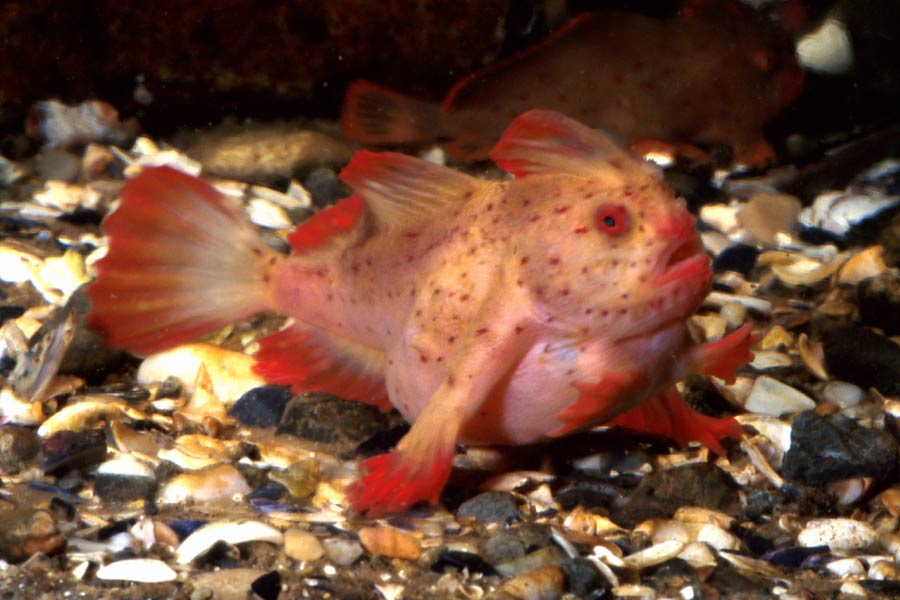
Scientific name: Thymichthys politus
Family: Brachionichthyidae
Conservation Status: Critically Endangered
The red handfish is a rare and unique species of anglerfish found in the coastal waters off southeastern Tasmania. It is characterized by its red and orange coloration, a distinctive "hand-like" pectoral fin, and a fleshy lure on its head used to attract prey.
The red handfish uses its pectoral fins to "walk" along the seafloor, searching for small invertebrates and fish to eat. This weird sea creature is considered "Critically Endangered" due to its extremely limited range and small population size, which is threatened by habitat loss, pollution, and the impacts of climate change on its coastal ecosystem.
Discover More with Active Wild
You can find out more about fish on this page: Fish – The Ultimate Guide
Discover different types of fish on this page: Types of Fish
Reef Stonefish
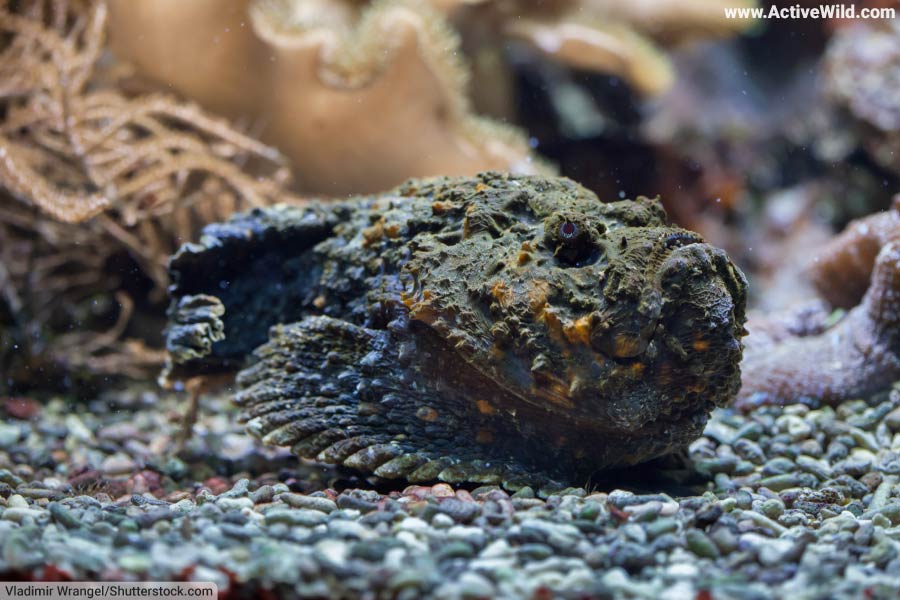
Scientific name: Synanceia verrucosa
Family: Synanceiidae
Conservation Status: Least Concern
The reef stonefish is a highly venomous fish found in the shallow waters of the Indo-Pacific region. It is the most venomous fish in the world, with potent neurotoxins secreted from its dorsal spines. The species belongs to the scorpionfish family, Synanceiidae.
The reef stonefish has excellent camouflage, resembling a rock or coral, which helps it ambush prey and avoid predators. It feeds on small fish and invertebrates that venture too close to its hiding spot.
Discover More with Active Wild
You can find out more about fish on this page: Fish – The Ultimate Guide
Discover different types of fish on this page: Types of Fish
Riftia Pachyptila
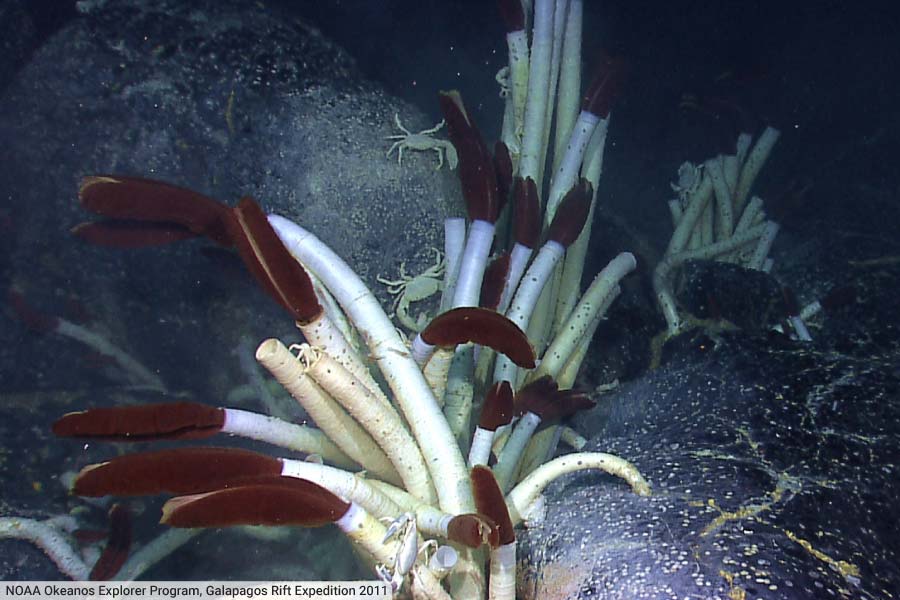
Scientific name: Riftia pachyptila
Family: Siboglinidae
Conservation Status: Not Evaluated
Riftia pachyptila, commonly known as the giant tube worm, is a deep-sea worm found near hydrothermal vents in the Pacific Ocean. It has a symbiotic relationship with bacteria living inside its body, which convert chemicals from the vent fluids into energy through a process called chemosynthesis.
The giant tube worm has a bright red plume, rich in hemoglobin, which it extends from its protective chitinous tube to absorb oxygen and chemicals from the surrounding water.
Discover More with Active Wild
Discover more invertebrates on this page: List Of Invertebrates
Sarcastic Fringehead
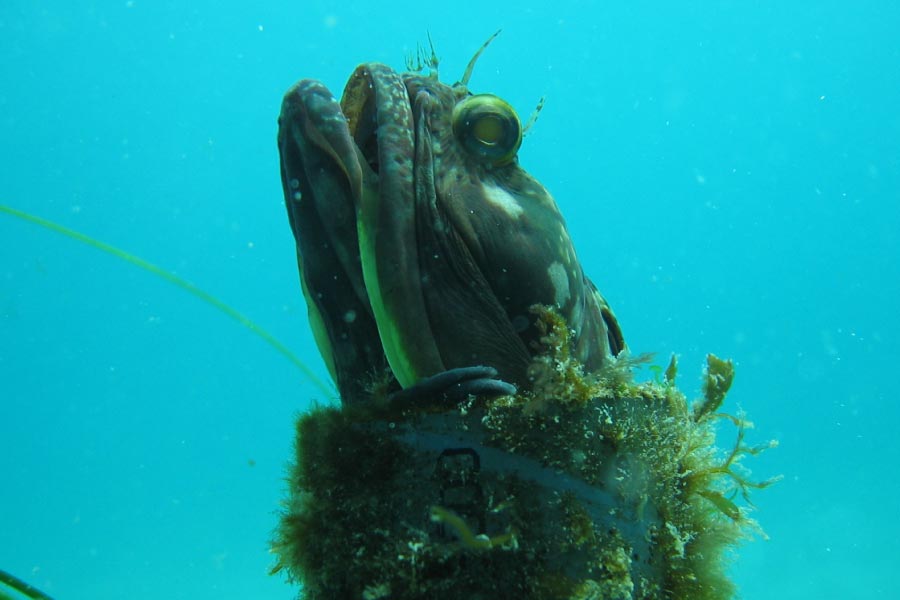
Scientific name: Neoclinus blanchardi
Family: Chaenopsidae
Conservation Status: Least Concern
The sarcastic fringehead is a small, aggressive fish found in the coastal waters of the eastern Pacific Ocean, from California to Baja California. It has a large, extensible mouth, which it uses in territorial displays and fights with other fringeheads.
The sarcastic fringehead inhabits empty mollusk shells, crevices, and discarded bottles on the ocean floor, from which it ambushes prey such as small fish and invertebrates. When threatened, it can open its jaw wide and flare out its lips, creating a frightening appearance to deter predators.
After the female has deposited her eggs, the male guards them until they hatch.
Discover More with Active Wild
You can find out more about fish on this page: Fish – The Ultimate Guide
Discover different types of fish on this page: Types of Fish
Sea Angel
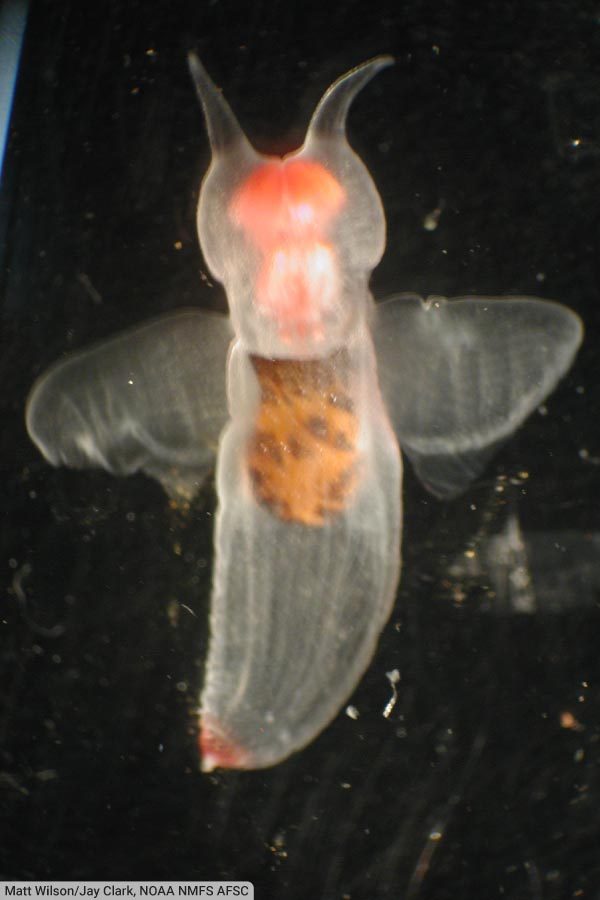
Scientific name: Gymnosomata (clade)
Family: Various
Conservation Status: Not Evaluated
Sea angels are a group of small, gelatinous marine sea slugs characterized by translucent, wing-like appendages, which they use to "fly" through the water.
Despite their jellyfish-like appearance, sea angels are mollusks, rather than cnidarians.
Sea angels are found in cold and temperate waters worldwide. They are predatory, primarily feeding on sea butterflies, which are another group of small, pelagic gastropods.
These weird sea creatures are hermaphrodites, capable of producing both male and female gametes (reproductive cells).
Discover More with Active Wild
Discover different types of mollusks on this page: Mollusks Examples
Sea Cucumber
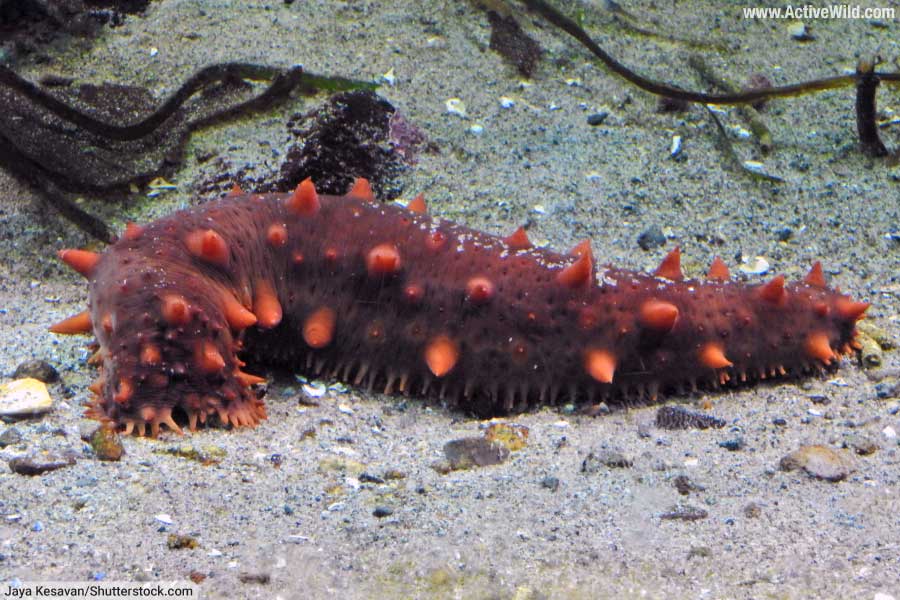
Scientific name: Holothuroidea (class)
Family: Various families
Conservation Status: Varies by species
Sea cucumbers are a diverse group of echinoderms that together make up the class Holothuroidea. 1,780 species are currently recognized. (source) These invertebrates have elongated, soft, cylindrical bodies with a leathery skin, and are found in a wide range of marine habitats, from shallow intertidal zones to the deep sea.
Sea cucumbers play an essential role in the marine ecosystem by breaking down organic matter and recycling nutrients. They feed on detritus and plankton, using tentacle-like structures around their mouth to capture food.
Discover More with Active Wild
You can see more examples of echinoderms on this page: Echinoderms Examples
Discover more invertebrates on this page: List Of Invertebrates
Sea Pen
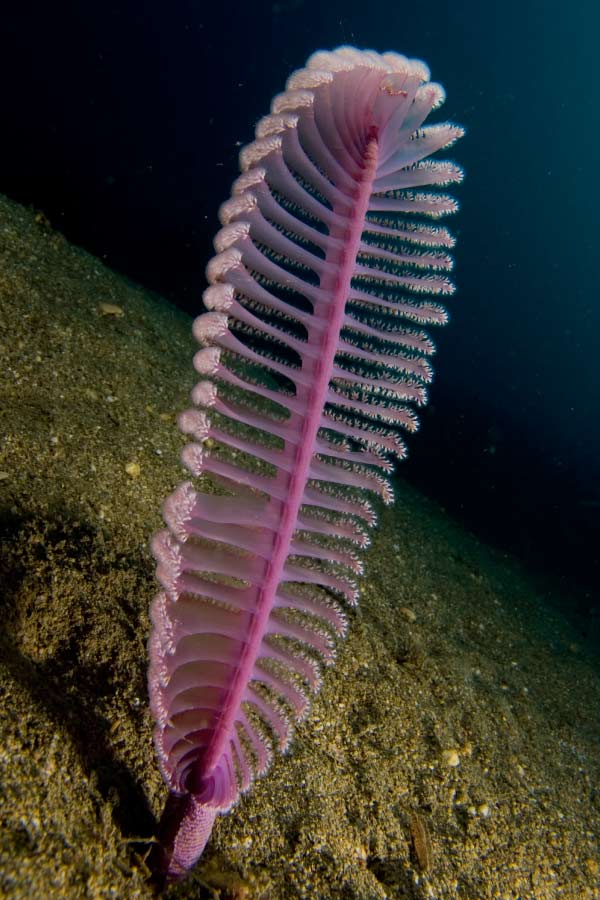
Scientific name: Pennatulacea (order)
Family: Various families
Conservation Status: Not Evaluated
Sea pens are colonial marine organisms belonging to the order Pennatulacea. This order is part of the phylum Cnidaria, which is also home to animals such as corals, sea anemones and jellyfish.
Instead of being a single organism, such as a dog, whale or human, a sea pen is colonial, meaning that a single sea pen consists of multiple organisms. Each organism has the form of a polyp, and has a specialized function to perform in order to keep the colony alive.
Sea pens are named for their feather-like appearance, resembling old-fashioned quill pens, however, not all sea pens take this form.
These weird ocean invertebrates are found in soft sediment habitats in oceans worldwide, anchored into the substrate by a bulbous structure called a peduncle. Sea pens are filter feeders, capturing plankton and other small organisms from the water column.
Discover More with Active Wild
Discover more invertebrates on this page: List Of Invertebrates
Vampire Squid
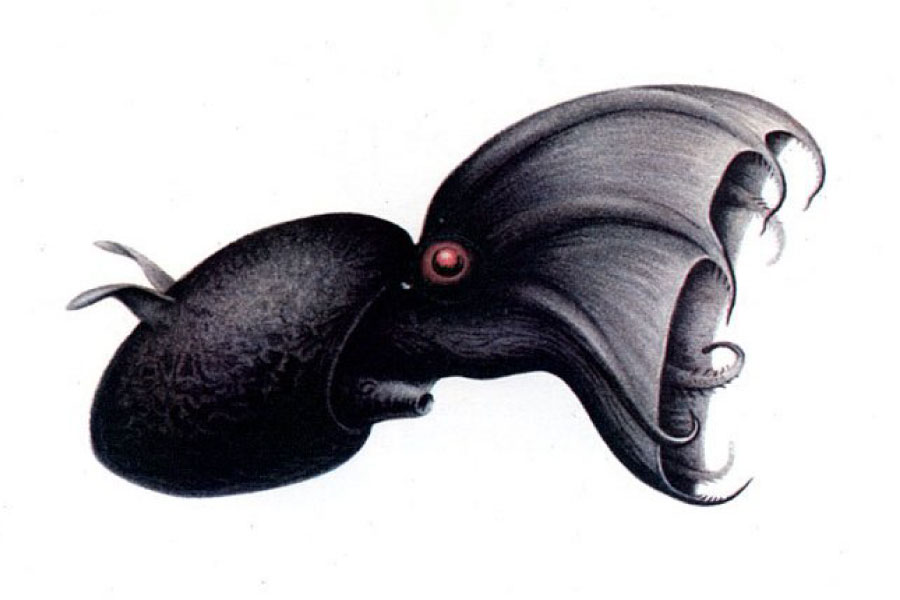
Scientific name: Vampyroteuthis infernalis
Family: Vampyroteuthidae
Conservation Status: Unassessed
The vampire squid is a deep-sea cephalopod with a unique combination of features from both squids and octopuses.
The species’ scientific name, Vampyroteuthis infernalis, means "vampire squid from hell". The name comes from the squid’s dark coloration, large eyes, and webbed arms that resemble a cape.
Despite its name, the vampire squid is not a bloodsucker; it feeds on marine snow, which is a mixture of dead organisms, fecal matter, and other organic debris that falls to the ocean depths.
Discover More with Active Wild
Discover different types of mollusks on this page: Mollusks Examples
Whale Shark
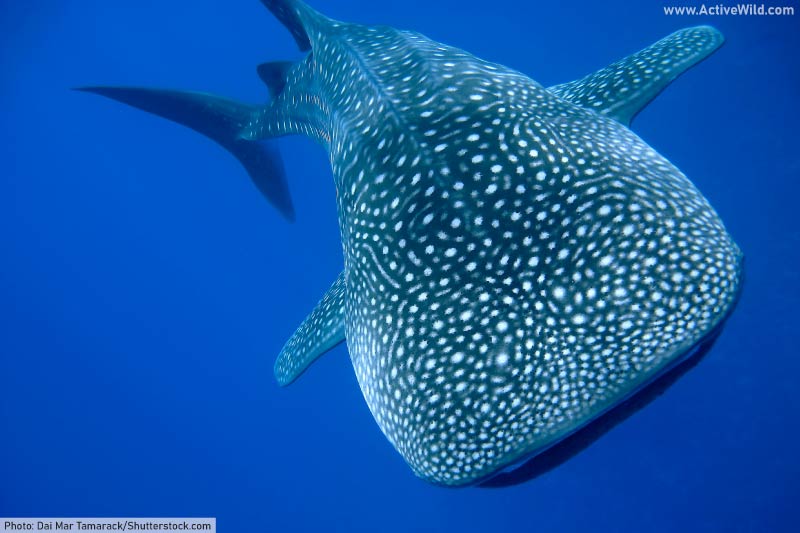
Scientific name: Rhincodon typus
Family: Rhincodontidae
Conservation Status: Endangered
The whale shark is not only the largest shark species, its also the largest living fish, reaching lengths of up to 40 feet and weighing as much as 20 tons.
Despite its great size, the whale shark is a gentle giant. Lacking the large, sharp teeth of sharks such as the fearsome great white, the whale shark feeds primarily on plankton, small fish, and crustaceans, which it filters from the water using its large mouth and specialized gill rakers. (The whale shark has hundreds of tiny teeth, but they are not used for feeding.)
The whale shark is found in warm tropical and temperate oceans worldwide, often aggregating in areas with high food availability. It has a distinctive spotted and striped pattern, which is unique to each individual.
Sadly, this huge fish is endangered due to threats from fishing, bycatch, and habitat degradation, as well as its slow reproductive rate and late sexual maturity.
Discover More with Active Wild
Discover more about the whale shark on this page: Whale Shark Facts
Find out more about sharks on this page: Shark Facts
Discover different types of sharks on this page: Types of Sharks
Discover More With Active Wild
Discover more weird animals
You can see other strange sea animals, such as the Christmas tree worm, dumbo octopus, goblin shark and Japanese spider crab on this page: Weird Animals.
More examples of weird sea fish, including the blobfish, fangtooth, frilled shark and stargazer, can be seen on this page: Weird Fish.

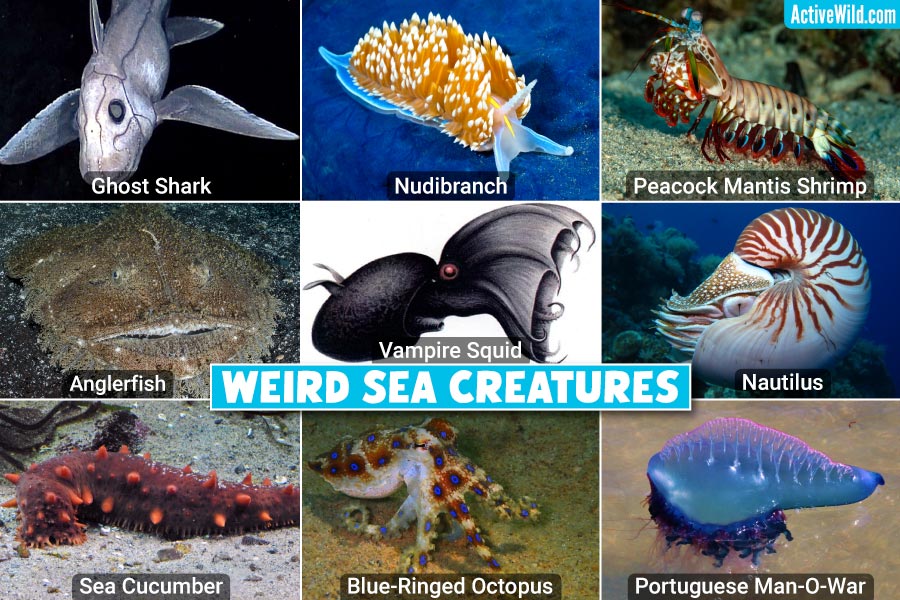

Sea cucumber is gross! 😢
Nautilus is sooooo cool 😂😂😂